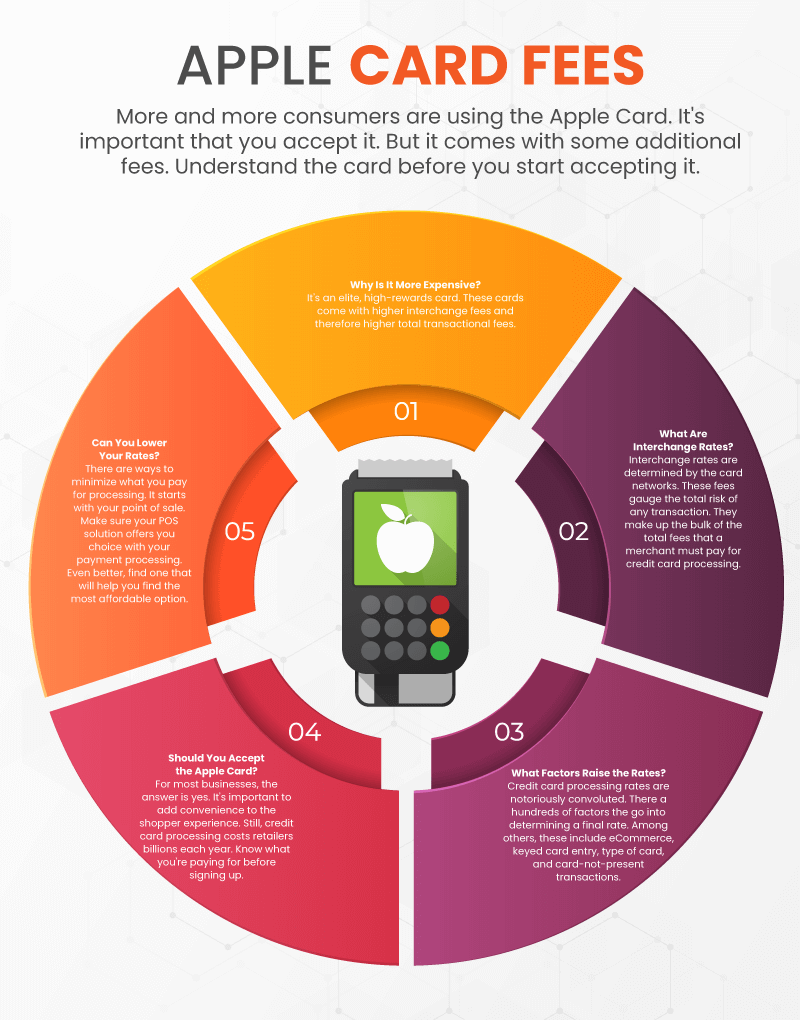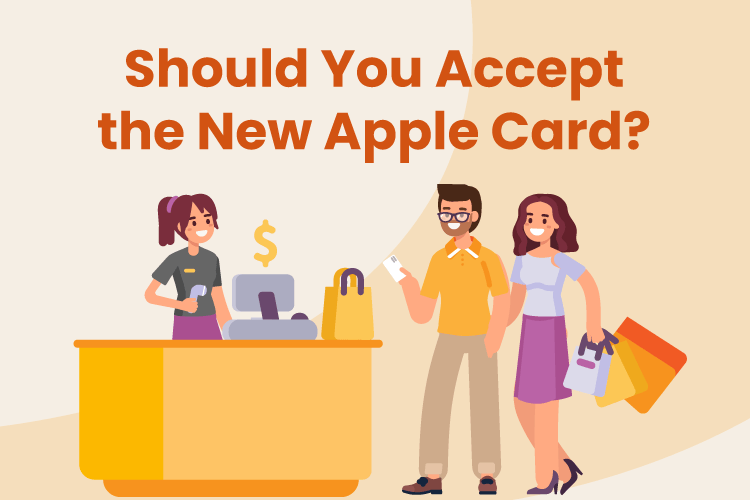The new Apple Card hit the market in late 2019 just in time for the holiday season. It’s one of the latest in the trend of chic new cards emerging from more non-traditional companies. Debit and credit cards traditionally would need to be backed by a bank or other lending institution.
Apple, however, went a different route and issued the card with their name on it, but it’s backed by Goldman Sachs Group Inc. In an effort to be marketable than other options on the market, the new Apple Card is all-white and consistent with Apple’s more minimal design.
But what does this new Apple Card payment option mean to merchants? We’ve long stressed the importance that businesses accept as many payment options as possible. To be sure, offering your shoppers convenience at the checkout is critical. But it’s also important to protect your bottom line. And for some retailers, Apple Pay fees for merchants might be just a bit too expensive. Let’s learn what the Apple Card cost will look like with Apple Pay merchant fees and why.

Why Is the New Apple Card More Expensive for Retailers?
Simply put, the card has higher fees. Because the Apple Card is deemed an elite, or high-rewards, card, the interchange fees for each transaction will be higher.
Unfortunately, these interchange fees are passed directly on to the merchant. Though the interchange fees make a small percentage of each transaction, a spike in rates can have serious consequences for businesses with small margins.
What Are Interchange Rates from the Card Networks?
The card networks – VISA, American Express, Discover, etc. – determine the interchange rates for each debit and credit transaction. There are other factors that contribute to the final processing fee that a merchant must pay, but the interchange fees make up the vast majority of the fees.
The card networks determine the fees as part of their regulatory role in the industry. The issuing bank (the consumer’s bank) actually collects most of this fee for assuming the risk in transferring the money for each transaction. After all, should the charge be contested, they’ll be the party that has to refund their member and lose the money.
So it’s upon this risk that interchange rates are based. Dynamic factors during payments can lower or raise the interchange rate. These commonly include the following:
- Card-not-present
- eCommerce
- Keyed entry
- Business cards
- High-rewards cards
Retailers can choose to avoid certain types of transactions in order to keep their interchange rates lower. But, most choose to accept all forms of payment to avoid losing a sale altogether because of the lack of convenience.
Why Do Higher Benefit Cards Come with Higher Interchange Fees?
The card networks argue that higher interchange fees are acceptable for higher benefit cards because those shoppers are more likely to spend more on a single purchase.
Typically, interchange rates increase when the transaction is deemed to be more risky to accept. This is not an instance of that, however. In fact, it’s quite the opposite – an elite card is far less risky than many other types of card payments.
Retailers are left having to accept these cards. No business is going to accept all VISA cards except the VISA Infinite, for example. Instead, because of consumer demand, retailers must accept all major cards and pay additional fees.
What Can Be Done About the Apple Pay Fees for Merchants?
Well, not much aside from refusing to accept the card.
But frustration at the card networks is building. In 2018, Kroger stopped accepting VISA cards due to their ballooned fees on high-rewards cards. The grocery giant is big enough to actually influence the industry, though no small business has this luxury, of course (VISA did actually lower their rates due to this incident, but recently announced new interchange fee changes).
The frustration is justified, however. Credit card processing costs soared to a new record in the United States in 2018, costing retailers $108 billion. Part of this is due to the fact that consumers are simply using cards as payment more frequently than ever. But it’s also due to increased rates, and the entry of dozens of new premier cards. It makes sense for banks to offer these, after all – higher rewards entice more customers, and larger interchange rates bring in more money.
At this point, small businesses can choose to reject the card or wait until the industry gets a much-needed makeover in regulatory standards.
How KORONA POS Can Help
First, KORONA POS isn’t a credit card processor. Our software integrates with all payment processors, giving each of our customers choice in the matter. We’ll even set you up with a credit card processing rate comparison to help you find the cheapest rates.
Plus, we’ll always work to keep you in the loop about industry standards. We’ll walk you through rate changes based on what cards you accept and what types of hardware you use.
Give us a call today or sign up for a rate comparison below!













